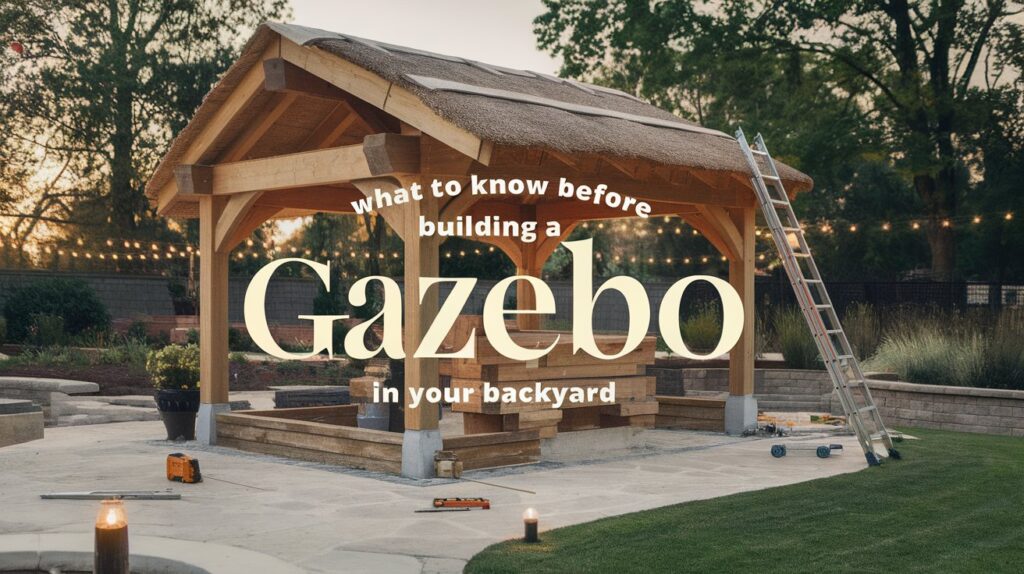A backyard gazebo is more than just an architectural feature-it’s a place where quiet mornings, family gatherings, and starlit evenings become memories. But before you dive into this dreamy project, it’s important to understand what’s involved in making it a reality. From zoning rules to foundation prep, building a gazebo requires more than just a hammer and nails. If you’re considering this kind of addition, it’s worth exploring what the process really looks like-and why working with the best gazebo contractors in Toronto, Oaks Home Services, can make all the difference.
Understand Local Regulations First
One of the most common mistakes homeowners make is skipping the red tape. However, most municipalities require permits for any structure with a roof, including gazebos. Whether you’re planning something small and simple or a large, enclosed structure, your local building codes will likely dictate:
- How far it must be set back from property lines
- Maximum height allowances
- Structural requirements based on wind or snow load
In some cases, you may also need to submit architectural plans or obtain HOA approval. Not only can skipping these steps lead to fines, but you could also be forced to take the structure down altogether.
Choose the Right Spot
Where your gazebo goes is almost as important as how it’s built. A sunny corner of the yard might seem ideal, but consider how you’ll use the space. Will it be a quiet reading nook? A centerpiece for entertaining? Placement should balance privacy, views, shade, and proximity to the house.
Be sure the spot is level-or can be leveled without major excavation. Also, think about accessibility. Is the path to your gazebo safe and walkable year-round?
Get the Groundwork Right
No gazebo is complete without a solid foundation. Depending on the size and material of your structure, you may need:
- Concrete footings
- Crushed stone with landscape fabric
- Interlocking pavers or patio stones
- Wooden decking platforms
Each option has pros and cons, both in terms of cost and long-term stability. Improper foundation work can lead to sagging, shifting, or worse-rot and water damage. This is one of the key areas where experienced professionals make a huge impact. They’ll assess your yard conditions and choose the right type of base to keep your gazebo safe and level for years to come.
Pick the Right Materials
Materials influence not just the look and feel of your gazebo, but also its maintenance and durability. Here’s a brief breakdown:
- Wood (cedar, redwood, pressure-treated pine) – Warm and natural, but needs regular staining or sealing
- Vinyl – Low-maintenance and clean-looking, though not as customizable
- Metal (aluminum, wrought iron) – Durable and modern, but can get hot in summer
- Composite – Combines the benefits of wood and vinyl, often more expensive up front
Think about climate, maintenance preferences, and overall garden style when choosing your materials. Also consider whether you want a screened-in design, integrated lighting, or built-in seating-each addition affects not only aesthetics, but your overall budget.
Budget Smarter, Not Just Bigger
Gazebos come in a wide price range. A simple kit might cost under $2,000, while a fully custom build with electrical wiring, fans, and screens could exceed $20,000. Your final price will depend on:
- Size and shape
- Materials
- Foundation type
- Roofing style (shingles, metal, polycarbonate, etc.)
- Labor costs
Trying to save by cutting corners can backfire quickly. Poor construction can lead to leaks, instability, or frequent repairs. Instead, think long-term. A slightly higher upfront investment with expert craftsmanship often means fewer headaches later.
When to Call in the Pros
DIY may be tempting-especially with online kits promising “easy weekend builds.” But the reality is rarely that simple. From accurate measurements and permitting to grading the land and ensuring structural integrity, building a gazebo involves far more than basic carpentry.
Here’s when hiring professionals is the smart move:
- You’re not comfortable interpreting or navigating zoning codes
- Your backyard is uneven or has drainage issues
- You want a custom design or added features like electricity or screens
- You don’t have the tools (or time) to do the job right
Bringing in experienced gazebo contractors not only streamlines the process but ensures your structure is built safely and to code. Many offer design consultations, handle permitting, and even coordinate landscaping to integrate the gazebo into your yard seamlessly.
A well-built gazebo can elevate your backyard from simple to stunning. But to enjoy the beauty without the burden, it’s essential to plan wisely, prepare thoroughly, and-when needed-partner with skilled experts. From choosing the right materials to setting the perfect foundation, every decision matters.

